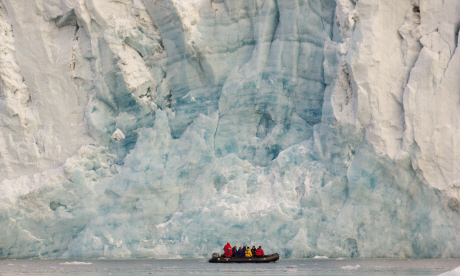
To take the best pictures, many of us abide by accepted ‘laws of photography’. But sometimes, reckons Steve Davey, flouting these rules produces far better photos
Read a book on photography and it will list a whole lot of rules that you’re supposed to follow. You’ll probably be told to shoot with the sun over your shoulder; to keep the horizon straight; to avoid making trees seem to grow out of people’s heads; to always use a mild telephoto lens for portraits.
Many of the things that you’re told will involve the so-called rules of composition. These are a series of visual conventions that have been formulated to make your pictures appear more balanced. In general, many of these rules are effective, and are often worth considering.
Unfortunately, some photographers get so hung up on the rules that they lose all creativity, following convention at the expense of taking a great picture. Once I even heard someone complain about an image that did feature a tree ‘growing out of someone’s head’ – when the shot was of a Papua New Guinean tribesman in a dense forest, trees everywhere...
The key to successful photography is to create a picture that stands out in some way. Some people try to achieve this by relying solely on the appeal of their subject matter; a good photographer will aim to enhance the photographic qualities of the picture as well.
Slavishly following the ‘laws’ of photography will produce pictures that tend to be bland and predictable. Breaking the rules can make your pictures bold and striking, so that they stand out and are unique. Indeed, like many rules in life, the rules of photography are made to be broken! But they should be broken boldly and for a reason, not simply because you don’t know that they exist or to try to create a contrived ‘style’. Get it right, and by breaking the rules you can create more effective, more striking and more meaningful images.
Conventional composition wisdom says you should place your subject on one of the imaginary ‘lines of thirds’ that dissect an image – not in the centre. Often this will give a more balanced image, but it can be too prescriptive, resulting in predictable pictures. Experiment with exaggerating the rule of thirds, placing the subject or the horizon at the edge of the frame, not on a third. Sometimes this not only creates a more visually striking picture, but conveys meaning better.
The rules will tell you that a portrait will look more natural if you shoot with a mild telephoto setting. Certainly using a wideangle lens can give some distortion on the face, but it can allow you to get closer and shoot a more engaged portrait.
Conventional wisdom says that you should keep the light behind you so your image is well lit. Boring! Shoot into the light and you can create more evocative images. Minimise ghosting (flare) on the lens by using a lens hood and keeping the front element clean – although sometimes this can actually add to the picture.
If shooting a horizon (especially the sea), your picture can look odd if that horizon is not straight. But don’t think that you always have to keep it level. Shoot on a deliberate diagonal to create a bold composition. Use this technique sparingly though: I know people who shoot all their images at a 20° list, for ‘style’.
Sometimes your picture can be more effective if you entirely ignore the rule of thirds and do place the subject in the centre of your picture – doing so enhances the reflection and the symmetry.
Break the rules of photography boldly and with a purpose – not just to try to be different: it can look contrived. Viewers should be able to tell that you meant to break the rules, and be able to see why.
Read a good book on photography: before you break the rules, it helps to know what they are in the first place! Look at pictures that you like, and work out what rules they follow and which ones they break.
Shoot with a range of focal lengths and lenses to create images with distinct and different styles. For example, if the rules say you should use a telephoto lens, try using a wideangle – and vice versa.
Steve Davey leads his own exclusive range of travel photography tours. Find more details, and a free downloadable travel photography guide, at BetterTravelPhotography.com